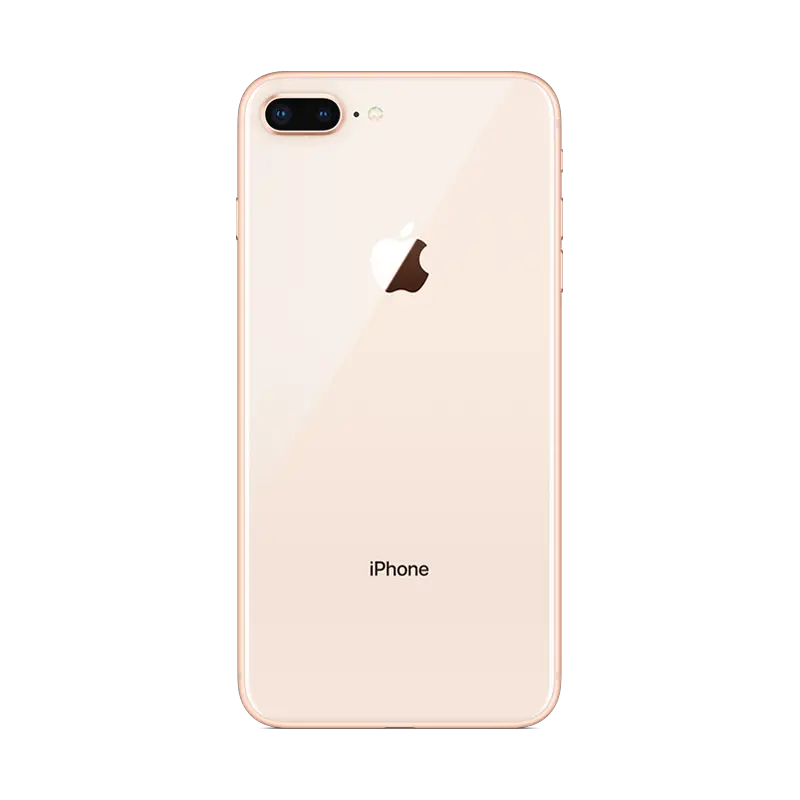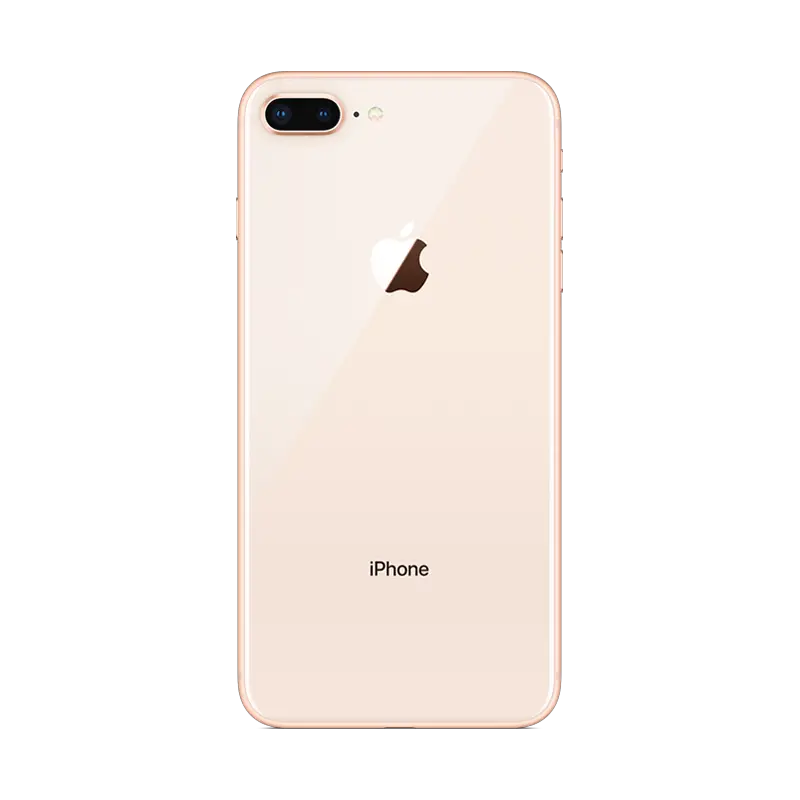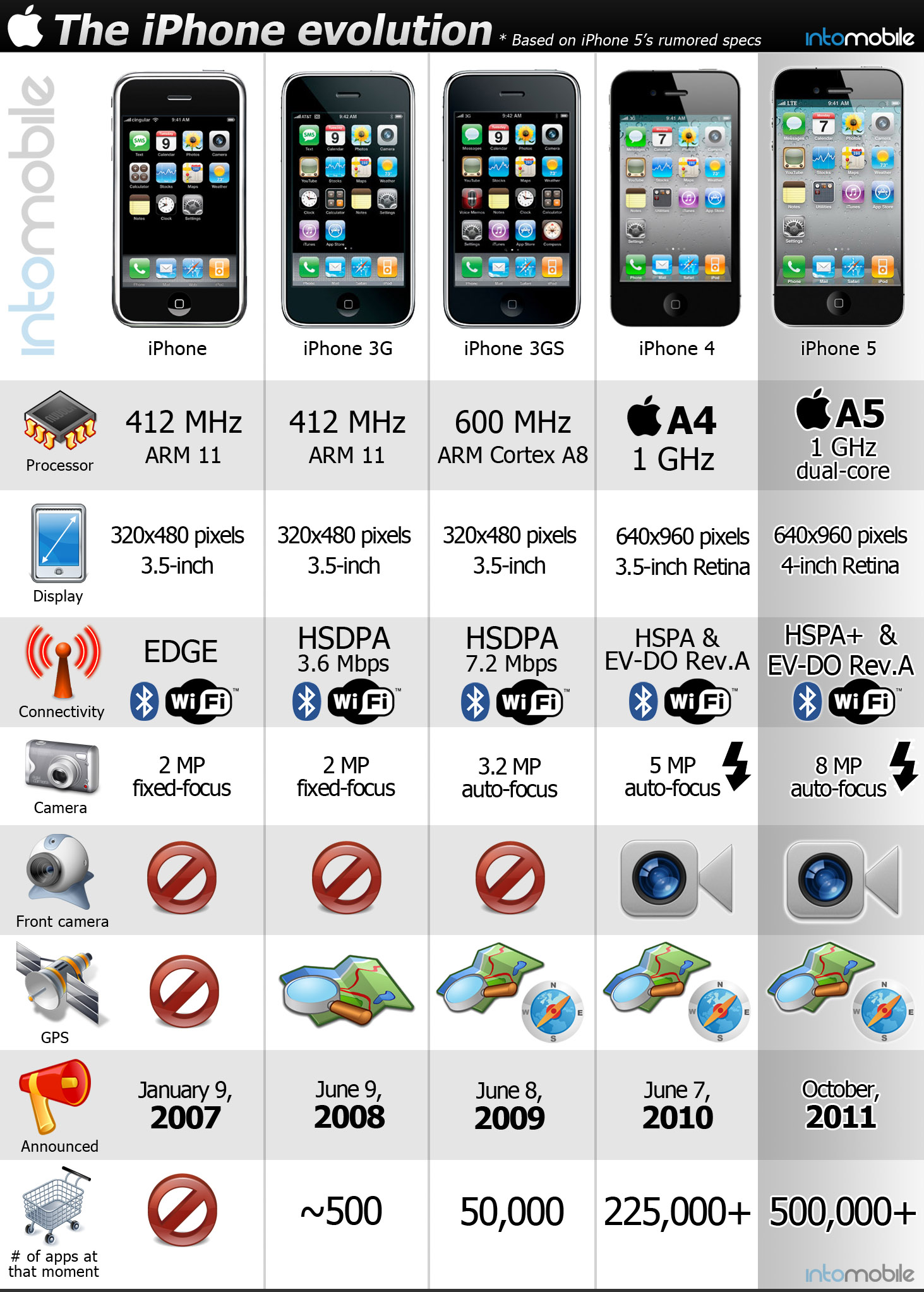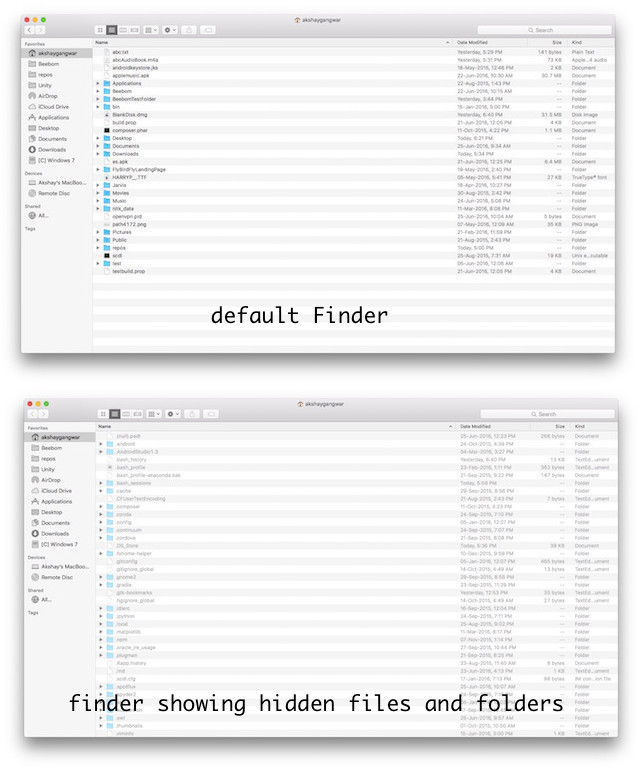
About a month ago, Apple unveiled its latest flagship smartphone lineup at the annual September iPhone launch event. Not just two, but three new iPhones were introduced: the iPhone 8, iPhone 8 Plus, and the bezel-less iPhone X. While the iPhone X garnered attention with its radical redesign, the iPhone 8 Plus represents an evolutionary rather than a revolutionary change, maintaining the four-year-old design introduced with the iPhone 6. However, this doesn’t mean there’s nothing new in the iPhone 8 Plus. Indeed, the smartphone boasts upgrades that promise excitement. If you’re considering upgrading to Apple’s latest and largest iPhone offering, you’ll want to know all about its new features and improvements. So, without delay, let’s delve into our comprehensive review of the Apple iPhone 8 Plus:
iPhone 8 Plus Specifications
Before delving into specifics, let’s examine the technical specifications of the iPhone 8 Plus:
| Dimensions | 158.4 x 78.1 x 7.5 mm |
| Weight | 202 g |
| Display | 5.5-inch IPS LCD True Tone Display (1920x1080p) resolution at 401 ppi, 3D Touch |
| Processor | A11 Bionic chip hexa-core CPU clocked at 2.5 GHz, Embedded M11 motion co-processor |
| RAM | 3GB |
| Storage | 64GB and 256GB |
| Primary Camera | Dual 12MP cameras, 1x wide-angle lens with f/1.8 aperture and 1x telephoto with f/2.8 aperture, 2x optical zoom, OIS |
| Secondary Camera | Single 7MP |
| Battery | 2675 mAH |
| Water and dust-resistance | IP67-certified |
| Sensors | 3-axis Gyro, Accelerometer, Proximity sensor, Ambient light sensor, Barometer |
| Connectivity | LTE-A, nano SIM slot, GPS, Wi-Fi b/g/n/ac with MIMO, Bluetooth 5, VoLTE, Wi-Fi Calling, Lightning |
| Colors | Space Grey, Silver, and Blush Gold |
| Price | Starts at $799 |
The Contents
- Apple iPhone 8 Plus
- Power Adapter
- Lightning Cable
- Apple EarPods
- Lightning to 3.5 mm dongle
- SIM ejector tool
- Instruction Manual
- Apple stickers
Design and Quality
Let’s discuss the design of the latest iPhone. In an era of bezel-less smartphones with impressive screen-to-body ratios exceeding 80%, we’re faced with an aging design seen on the past three iPhones, starting from the iPhone 6 Plus. While Apple’s reveal of the iPhone 6 Plus design in 2014 initially impressed, a side-by-side comparison with this year’s smartphones like the Galaxy S8 and Note 8 highlights the disappointing prominent bezels on the iPhone 8 Plus.
Apple has tweaked the design and introduced a glass back on the latest iPhone. Wireless charging is likely the primary reason behind this change, a welcome addition. The glass back is reinforced with a 7000-series Aluminium frame, the same material used on the iPhone 6S Plus and iPhone 7 Plus, making it the most durable glass ever in a smartphone. However, the glass back makes the iPhone 8 Plus one of the most vulnerable smartphones to date, nearly matching the Samsung Galaxy S8.
One advantage of not having a bezel-less screen is the presence of a home button housing the Touch ID fingerprint scanner. The premium iPhone X sacrificed this feature for its bezel-less design. Thus, there’s no need to worry about Apple’s new Face ID security measure. However, like its predecessor, the iPhone 8 Plus lacks a headphone jack, and it’s unlikely to appear in future iPhones. Fortunately, the company includes a lightning to 3.5 mm dongle for using existing headphones.
Display
Android flagships have frequently featured AMOLED displays at QHD (2560 x 1440 pixels) resolution in recent years. However, the new iPhone 8 Plus lacks both an AMOLED panel and a higher resolution display. Remarkably, Apple has maintained the same Full HD IPS LCD panel since the 2014 iPhone 6 Plus. This consistency is disappointing, especially considering the $999 iPhone X will offer an OLED panel and higher resolution display.
That said, the iPhone 8 Plus display integrates the company’s “True Tone” technology. Enabled by front-facing sensors measuring ambient light color and brightness, this feature debuted with the iPad Pro earlier this year. Its operation resembles iOS’ Night Shift mode, which adjusts display color temperature based on time and location.
With the new True Tone display, there’s significantly less strain on the user’s eyes. If True Tone isn’t your preference, it can be easily disabled in Settings, so it’s not obligatory. Besides, the latest Apple flagship supports DCI-P3 wide color gamut, noticeably improving color reproduction compared to traditional IPS LCD screens.
User Interface
Now, let’s delve into the software realm. Apple consistently highlights the seamless integration of its software with hardware, and to some degree, they’re justified. Unlike Android, iOS experiences minimal fragmentation, ensuring most apps on the Apple App Store are fully optimized. Personally, this is a primary reason for my preference for iOS over Android. The iPhone 8 Plus comes with iOS 11 preinstalled, offering numerous new features and enhancements.
In iOS 11, the Control Center undergoes a significant overhaul, becoming fully customizable in Settings. Users can now add toggles like Screen Recording, Do Not Disturb While Driving, and Apple TV Remote. The lock screen also changes noticeably, allowing users to swipe up recent notifications. The App Store sees a redesign, featuring bold texts and introducing a new Today section. Additionally, iOS 11 introduces peer-to-peer payment through Apple Pay, simplifying money transfers between contacts.
Apple’s iOS 11 introduces a new image format, High Efficiency Image Format, to conserve iPhone storage space. It reduces photo size without sacrificing quality. This feature is particularly useful for iPhones with 32 or 64 GB storage. However, compatibility issues exist, though enabling or disabling the format is simple.
iOS 11 delivers the iconic experience synonymous with the company, enhanced by numerous improvements. Upgrading from an older iPhone unveils a plethora of new features and tricks. Yet, transitioning from Android highlights Apple’s closed ecosystem and limited customizability.
Performance
Apple maintains an impressive track record for delivering top-notch performance on iPhones, and the iPhone 8 Plus is no exception. According to Apple, the company’s latest flagship houses “the most powerful and smartest chip ever in a smartphone”. That’s right, the device is powered by the A11 Bionic chip, a hexa-core processor with 4 efficiency cores up to 70 percent faster and 2 performance cores up to 25 percent faster than the A10 Fusion chip in last year’s iPhone 7 Plus. This is the same processor found in the premium iPhone X starting at $999, so you’re not sacrificing anything in performance by opting for the 8 Plus.
Being the first 6-core processor from Apple, the A11 Bionic chip has dominated Geekbench scores. It outperforms other Android flagships, such as the Samsung Galaxy S8, Note 8, and OnePlus 5, which use Qualcomm’s Snapdragon 835 processors. We tested both our iPhone 8 Plus and the Galaxy S8 on Geekbench to compare performance. The results are impressive. In single-core performance, the iPhone 8 Plus scored 4261 on Geekbench, while the Galaxy S8 barely reached 2000. For multi-core performance, the Apple flagship effortlessly surpassed 10,000, whereas the Galaxy S8 managed only 6605 despite having two additional cores in its Snapdragon 835 octa-core chip.
When it comes to real-world performance, the disparity between the iPhone 7 Plus and iPhone 8 Plus is negligible unless you make a direct comparison. Thanks to iOS 11 optimizations, our iPhone 8 Plus operates swiftly regardless of the demanding applications we use. While there are few iOS apps currently capable of fully utilizing the potential of the Bionic chip, having such a potent chip remains crucial for ensuring the smartphone remains efficient over time, resisting slowdowns with future iOS updates.
Cameras
Apple continually enhances iPhone cameras, and this year is no exception. This is a major reason to upgrade to the iPhone 8 Plus, especially from models older than the 7 Plus. While the dual-camera setup debuted with the iPhone 7 Plus, Apple has further refined it with the iPhone 8 Plus. The iPhone 8 Plus camera received a remarkable score of 94 on DxOMark, aligning it with top-rated smartphones like the Samsung Galaxy Note 8. We eagerly anticipate comparing our iPhone 8 Plus to the recently unveiled Google Pixel 2, currently the highest-rated smartphone camera with an exceptional score of 98 on DxOMark.
On paper, the iPhone 8 Plus maintains the same 12 MP dual-camera setup with an aperture of f/1.8 for the wide-angle lens and f/2.8 for the telephoto lens as last year’s iPhone 7 Plus. However, we noticed a significant improvement in the results, particularly in low-light conditions. Apple appears to have corrected the white balance in photos taken with the 8 Plus, possibly due to the new color filter inside the lenses. The photos exhibit natural colors rather than being over-saturated, with minimal post-processing compared to Samsung’s recent flagships, ensuring most of the image detail is well-preserved.
Portrait mode persists with the dual-camera setup, now enhanced. The bokeh effect in low-light is notably improved from the 7 Plus, thanks to the better Sony sensor, evident in dim conditions with reduced noise. Apple introduces “Portrait Lighting,” a new software-based feature with the iPhone 8 Plus. Although in beta, it feels somewhat gimmicky presently due to its difficulty in execution. However, achieving success after several tries undoubtedly yields impressive results.
Portrait Lighting introduces five new effects to experiment with. The first, “Natural Light,” mirrors the default Portrait mode photo seen on the 7 Plus. “Studio Light” provides a softer, more even illumination akin to studio lighting. “Contour Light” adds shadows and highlights to sculpt the subject’s face, a visually appealing touch. However, “Stage Light” and “Stage Light Mono,” which darken the background, present a challenge to master.
Regarding the secondary front-facing selfie camera, the iPhone 8 Plus maintains a 7 MP sensor with an f/2.2 aperture, excelling at capturing sharp selfies. Some may not appreciate how it accurately preserves details, particularly since it struggles to conceal facial marks and acne spots in post-processing. Furthermore, lacking the True Depth camera system means the 8 Plus cannot capture Portrait photos with the front-facing camera like the upcoming iPhone X. Lastly, for video recording, the iPhone 8 Plus can record 4K footage at 60 fps, a groundbreaking feature for smartphone cameras. If vlogging is your passion, you’ll relish creating videos on Apple’s latest flagship.
Telephony & Audio Quality
Upgrading from recent iPhones, you likely won’t notice any change in call quality; it remains consistent across devices. In my experience, I haven’t encountered any call drops or quality issues. Both parties could hear each other clearly, so this isn’t a concern.
Apple retains the stereo speakers from the iPhone 7 Plus, ensuring superior audio quality. Expect louder, distortion-free sound for music and movies, thanks to this feature. The latest Apple flagship maintains stereo sound by utilizing both the earpiece and bottom speakers intelligently, just like its predecessor. However, the absence of a headphone jack persists. Yet, Apple includes EarPods with Lightning connector and a Lightning to 3.5 mm dongle in the box, mitigating the inconvenience. Bluetooth headsets or Apple’s AirPods offer additional options for wireless listening.
Connectivity
Recent Android flagships like LG V30 and Galaxy Note 8 feature hybrid SIM card slots, accommodating two SIM cards or a SIM card and a micro SD card. Unfortunately, the iPhone 8 Plus, like its predecessors, lacks this capability, remaining a single-SIM device. However, its 256 GB variant offers ample storage for media files, mitigating concerns about expandable storage. The plastic antenna band on the 7000-series aluminum frame ensures clear network reception, alleviating any reception worries.
The iPhone 8 Plus supports most LTE bands for global connectivity. In the United States, it utilizes LTE-Advanced and carrier aggregation where available, providing faster mobile data. The device features Bluetooth 5.0, offering twice the speed and four times the range of its predecessor. It also supports dual-band 802.11 Wi-Fi (a/b/g/n/ac), prioritizing the 5 GHz band for minimal interference.
Battery and Charging
We’d like to address both praise and criticism regarding the battery life of the latest Apple flagship. Let’s begin with the drawbacks. On paper, the iPhone 8 Plus features a smaller 2691 mAh battery compared to its predecessor, which is disappointing. Dear Apple, we observe similar-sized Android smartphones boasting 3500 mAh batteries or higher, leaving us puzzled about your approach. The company could have made more effort to enhance the phone’s battery life, but we are uncertain about the hindrances.
Thanks to the new energy-efficient A11 Bionic chip and optimized iOS 11, the iPhone 8 Plus delivers all-day battery life despite its smaller battery. In real-world usage, it outlasts my iPhone 7 Plus. Apple achieving all-day battery life with a small battery hints at even better performance with a 3500 mAh battery in future iPhones.
The valuable additions to the iPhone 8 Plus include wireless and fast charging support, features long present in certain Android smartphones. Despite the wait, Apple’s implementation is noteworthy. The 8 Plus charges from 0 to 50% in just 30 minutes. However, the provided power adapter doesn’t support fast charging; you need Apple’s official 29W, 61W, or 87W adapters, or equivalent third-party ones supporting USB Power Delivery. This lack of a provided fast charger is disappointing compared to competitors’ practices, suggesting Apple’s profit-centric approach.
Regarding wireless charging, Apple employs the Qi standard. Thus, you must buy a third-party wireless charger. Apple also develops its wireless charger, AirPower, allowing simultaneous charging of multiple devices—iPhone, Apple Watch, and AirPods—but it’s not available until next year.
iPhone 8 Plus: Not a Sight to Behold
The iPhone 8 Plus, undeniably a great phone, lacks the modern aesthetics expected of a 2017 smartphone. Amidst the trend of bezel-less designs showcased in devices like the Galaxy S8, Mi Mix 2, and LG V30, the 8 Plus presents a 3-year-old design with significant bezels. Moreover, the unveiling of the radically redesigned iPhone X further diminishes enthusiasm for the 8 Plus.
Despite its appearance, this new smartphone boasts impressive features. It houses the fastest chip ever seen in a smartphone, delivering noticeable performance upgrades, especially for those upgrading from an iPhone 6S or older. Moreover, it sports one of the finest smartphone cameras to date, offering AI-based Portrait Lighting effects for professional-looking photos. If you haven’t experienced a dual-camera setup yet, visit the nearest Apple store and try the iPhone 8 Plus for yourself. You’ll be captivated by the accuracy of its bokeh effect.
Admittedly, Apple has been slow to adopt wireless and fast-charging technology, but better late than never, right? iPhone users have eagerly awaited this feature, and it’s finally here. However, it’s disappointing that Apple requires an additional hundred-dollar investment for wireless and fast charging capabilities.
In conclusion, the iPhone 8 Plus represents an evolutionary rather than revolutionary change, as the title suggests. If you seek a smartphone that embodies the latest trends of 2017, consider waiting for the upcoming iPhone X or exploring alternatives like the Galaxy Note 8 or LG V30.
Review: iPhone 8 Plus – Evolutionary Excellence
For those eyeing the iPhone X’s lofty price tag, the iPhone 8 Plus emerges as a compelling alternative. Armed with the formidable A11 Bionic chip, a top-tier camera setup, and iOS 11 optimization, it delivers power and performance akin to its pricier counterpart. The True Tone display, along with wireless and fast charging capabilities, further solidify its appeal.
Pros:
- A11 Bionic: Reigns as the pinnacle of smartphone chip technology
- Camera Excellence: Boasts a top-of-the-line camera setup
- iOS 11 Optimization: Ensures seamless performance
- True Tone Display: Enhances visual experience
- Wireless & Fast Charging: Convenient and efficient
- Improved Battery Life: Incremental enhancement over its predecessor
Cons:
- Ageing Design: Shows signs of dated aesthetics
- Outdated Full HD IPS Panel: Falls short of contemporary display standards
- No Headphone Jack: Sacrifices traditional connectivity
- Lacks Included Fast Charger: Additional expense for fast charging capabilities
- High Price Tag: Considerable investment
The iPhone 8 Plus embodies evolution rather than revolution, making it a compelling choice for those seeking performance and functionality without the premium of the iPhone X. While it may not boast the bezel-less marvel of its counterpart, its enhancements in performance and camera quality present a notable upgrade, particularly for users of older iPhone models. However, for those contemplating a shift from Android to iOS, the limitations of the closed ecosystem warrant consideration. While Android may offer superior alternatives, the distinct iOS experience remains a draw in itself.
So, what’s your take on the iPhone 8 Plus? Would you opt for this evolutionary refinement over the transformative iPhone X, or is the latter’s redesign worth the splurge? Share your insights in the comments below!
Get the new iPhone 8 Plus ($799)

Pritam Chopra is a seasoned IT professional and a passionate blogger hailing from the dynamic realm of technology. With an insatiable curiosity for all things tech-related, Pritam has dedicated himself to exploring and unraveling the intricacies of the digital world.




